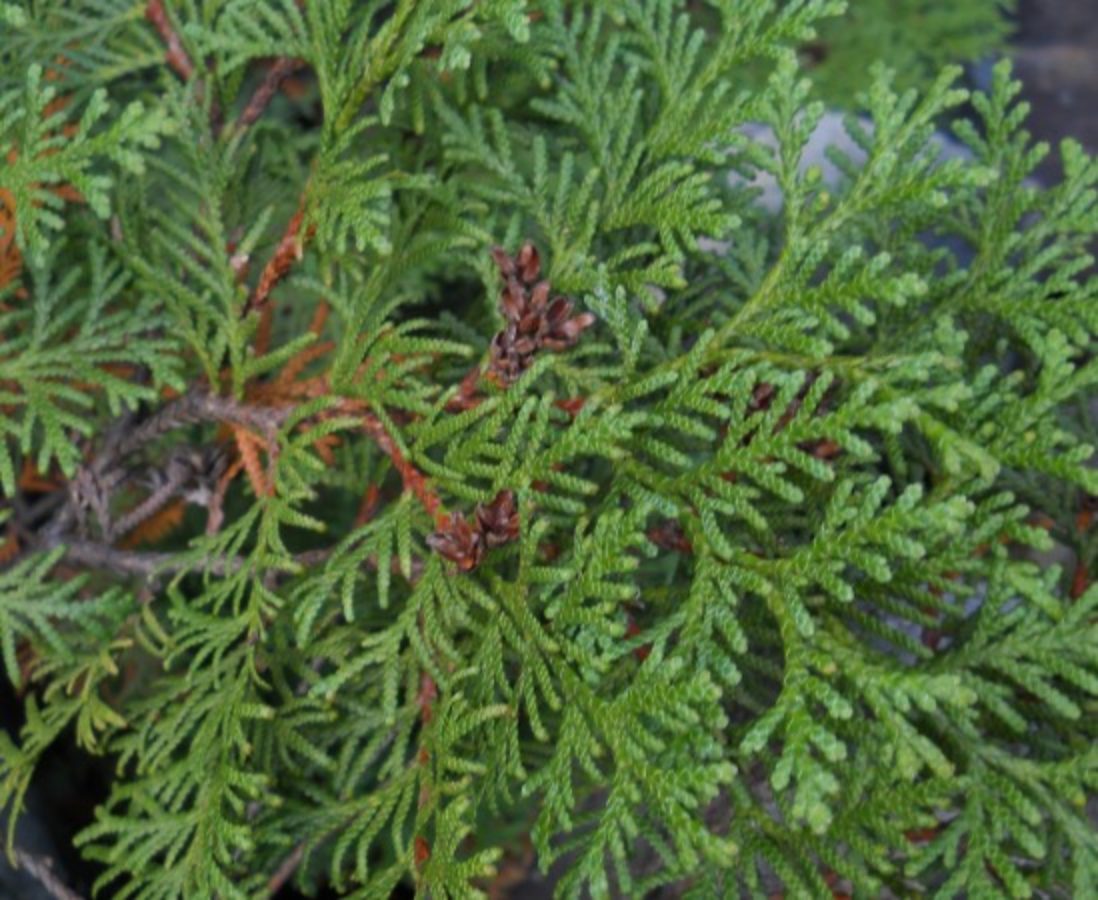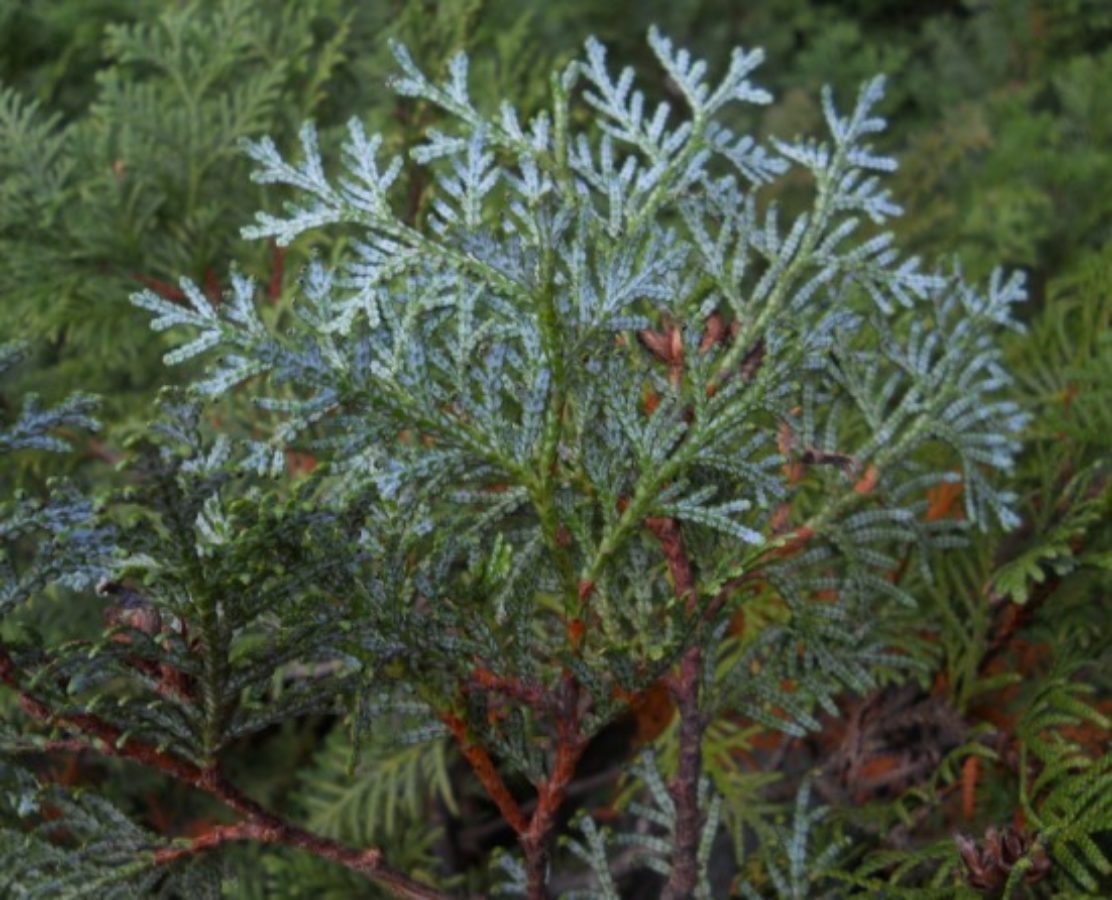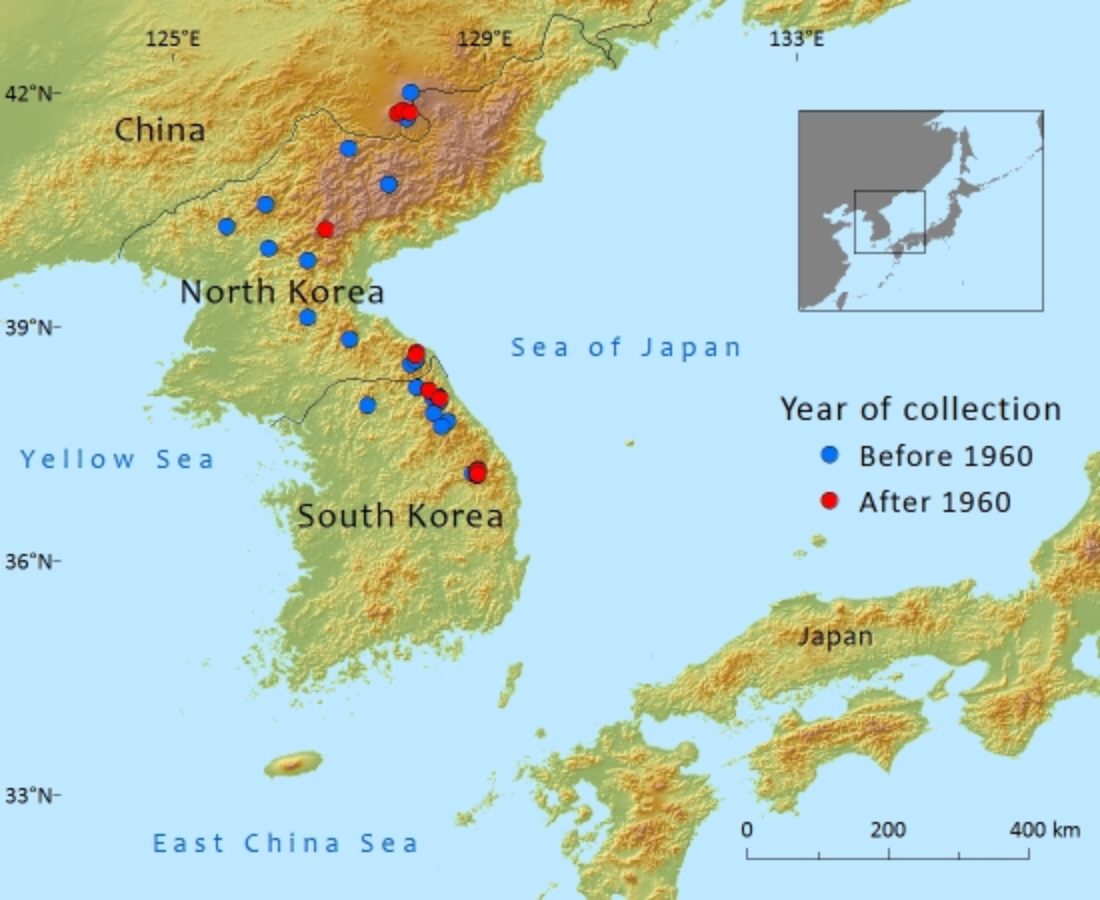Cupressaceae
Thuja koraiensis
Distributed in NE China, North and South Korea where it has mainly become threatened through deforestation.
References and further reading
- Fu, L.K. & Jin, J.M. (1992). China Plant Red Data Book – Rare and Endangered Plants 1. Science Press, Beijing.
- Hayes, P. (2009). Unbearable legacies: The Politics of Environmental Degradation in North Korea. Globalasia 4(2): 1–7.
- Kim, H., Chang, K.-S. & Chang, C.-S. (2010). E.H.Wilson's Expedition to Korea from 1917 t0 1919: Resolving Place Names of His Collections. Journal of Japanese Botany 85: 99–117
- Kim, Y.S. (1992). List of rare and endangered plant species in Republic of Korea (unpublished).
- Kim, Y.-S., Chang, C.-S., Lee, H. & Gardner, M. (2011). Thuja koraiensis. In: IUCN 2012. IUCN Red List of Threatened Species. Version 2012.2. . Downloaded on 16 November 2012.
- Kolbeck, J. & Kucera, M. (1989). A brief survey of selected woody species of North Korea. Botanical Institute, Czech Academy of Sciences, Pruhonice, Czechoslovakia.
- Korea National Arboretum. (2009). Rare Plants Data Book of Korea. Korea National Arboretum.
- National Environment Protection Bureau. (1987). The list of rare and endangered plants protected in China. Botanical Institute of Chinese Academy of Sciences, Academy Press, Beijing.
- Tang, L., Shao, G., Piao, Z., Dai, L., Jenkins, M.A., Wang, S., Wu, G., Wu, J. & Zhao, J. (2010). Forest degradation deepens around and within protected areas in East Asia. Biological Conservation 143: 1295–1298.
- UNEP. (2003). DPR Korea: State of the environment. United Nations Environmental Programme, Klong Luang, Pathumthani, Thailand.
- Wang, S. and Xie, Y. (2004). China Species Red List. Vol. 1 Red List. Higher Education Press, Beijing, China.
- Wilson, E.H. (1920). Four New Conifers from Korea. Journal of the Arnold Arboretum 1: 186–181.
- Yang, X. & Ming, X. (2003). Biodiversity conservation in Changbai Mountain Biosphere Reserve, northeastern China: status, problem, and strategy. Biodiversity and Conservation 12: 883–903.











